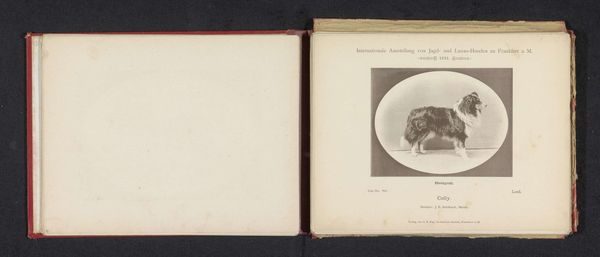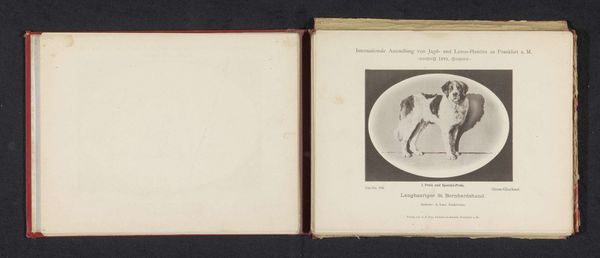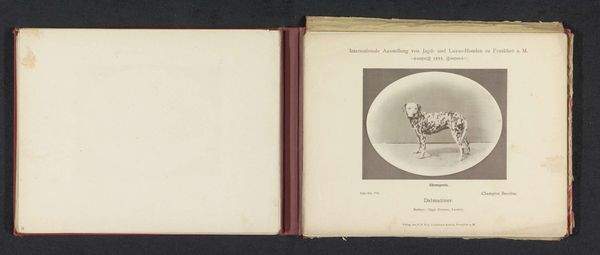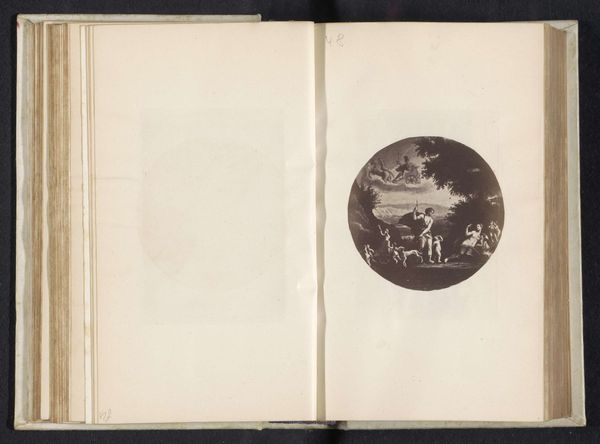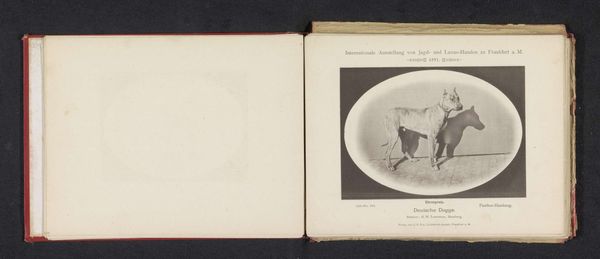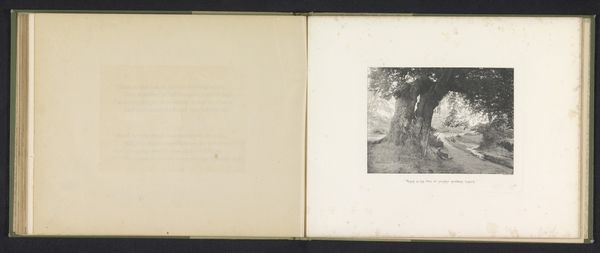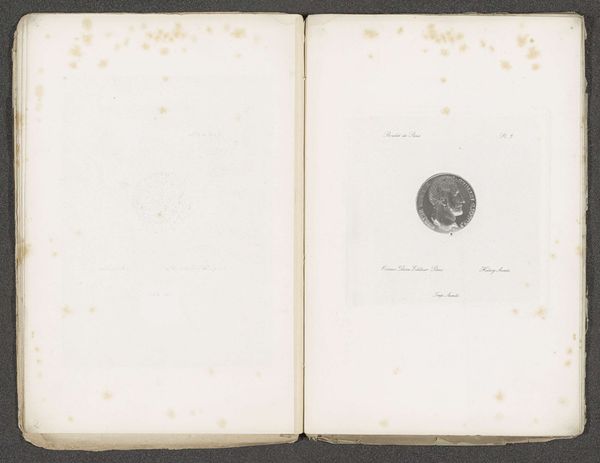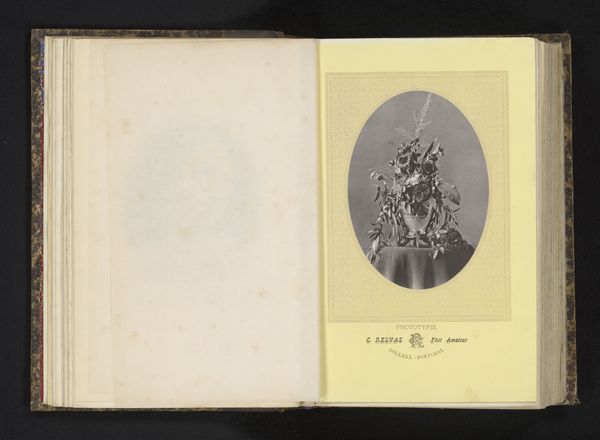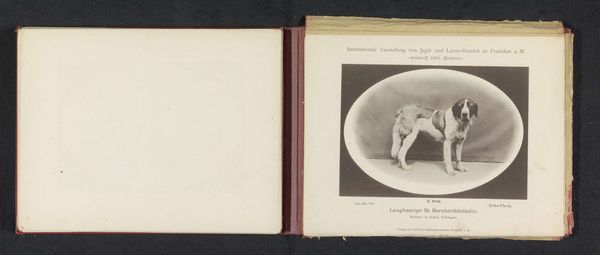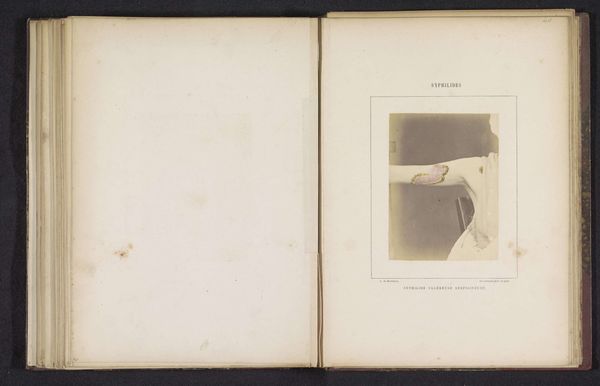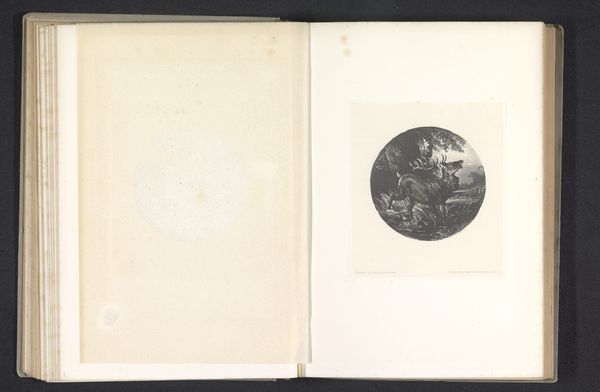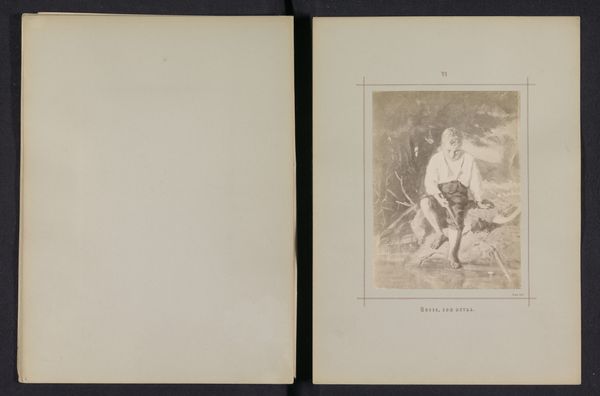
Black and tan terriër Faust die een tweede prijs heeft gewonnen op de Internationale Ausstellung von Jagd und Luxus Hunden in 1891 1891
0:00
0:00
print, photography
#
portrait
# print
#
dog
#
photography
#
coloured pencil
Dimensions: height 103 mm, width 133 mm
Copyright: Rijks Museum: Open Domain
Curator: This print, created in 1891 by an anonymous artist, presents "Black and tan terriër Faust die een tweede prijs heeft gewonnen op de Internationale Ausstellung von Jagd und Luxus Hunden in 1891"—which translates to "Black and Tan Terrier Faust Who Won Second Prize at the International Exhibition of Hunting and Luxury Dogs in 1891." Editor: The mood strikes me as oddly formal and slightly melancholy. The lighting casts such defined shadows on the dog. It's a somber photograph of a prize-winning dog, encased within this creamy border of paper and card. Curator: Consider the material process. It's photography reproduced as a print, presented within the context of a catalog documenting a specific social event: a dog show dedicated to hunting and luxury breeds. The means of production tell us much about the intended audience, wealthy enough to afford luxury goods and leisure activities. Editor: Right. Let's examine Faust. The collar and cropped ears signify its utility for hunting or perhaps dogfighting; what emotional value did this symbol convey? But that little chain lead implies he is well-cared for and accustomed to public performance for exhibitions and gatherings, in any case, suggesting status through careful control and presentation. Curator: Precisely! The printing itself is a form of commodification, transforming Faust from working dog to a high-status signifier for purchase and appreciation. The physical book, the paper quality, the inks used, speaks to material choices meant to enhance its appeal to the buyer, thus perpetuating a system of class division even into animal ownership. Editor: Absolutely. A fascinating look at a simple image laden with symbolism; from pride to utility to commerce. We began to read symbols connected with domestic animal’s place in that epoch, linking Faust to a very broad, human narrative! Curator: Indeed! Considering the object's materials informs its narrative by unveiling socio-economic strata ingrained in its manufacturing process and context for it being at all!
Comments
No comments
Be the first to comment and join the conversation on the ultimate creative platform.
